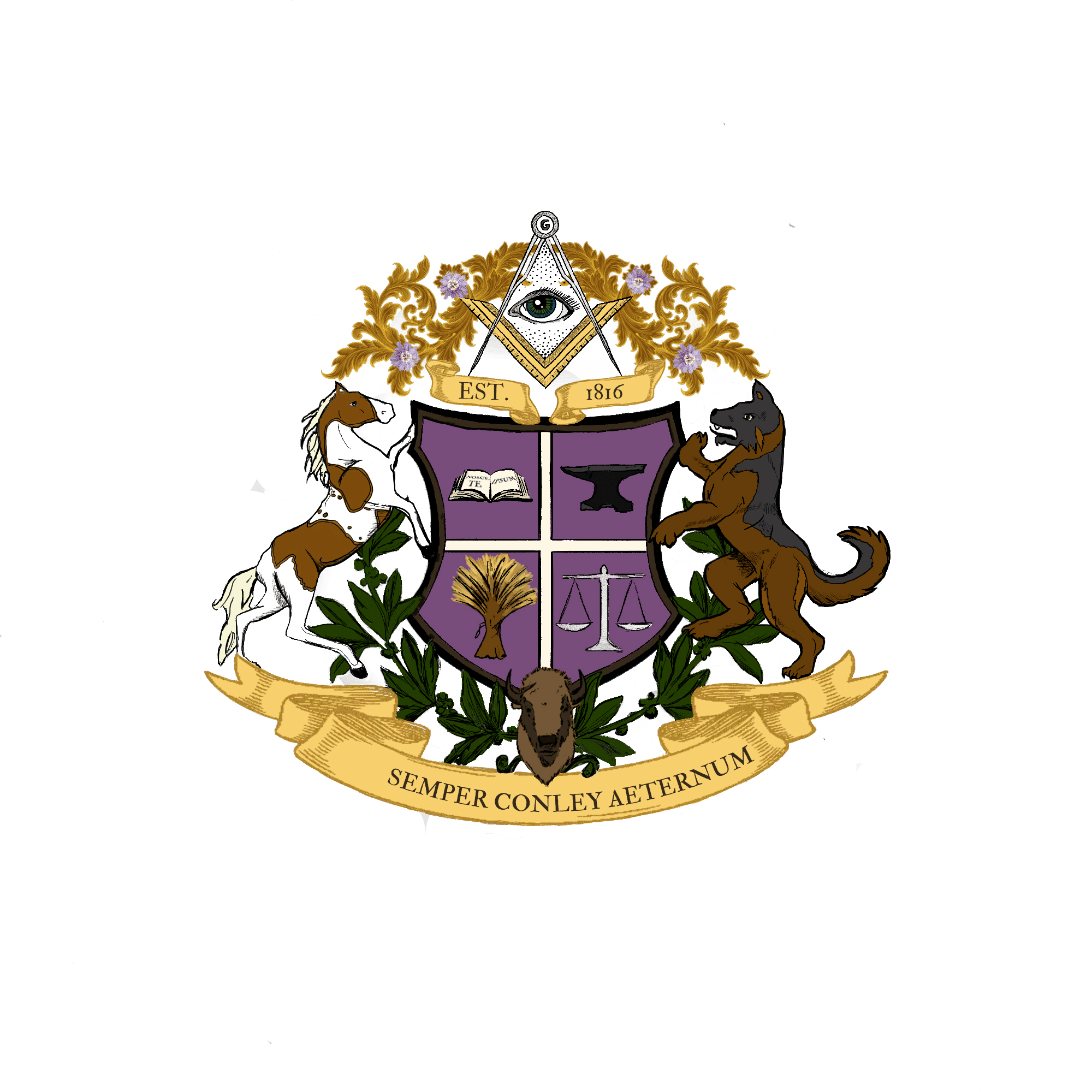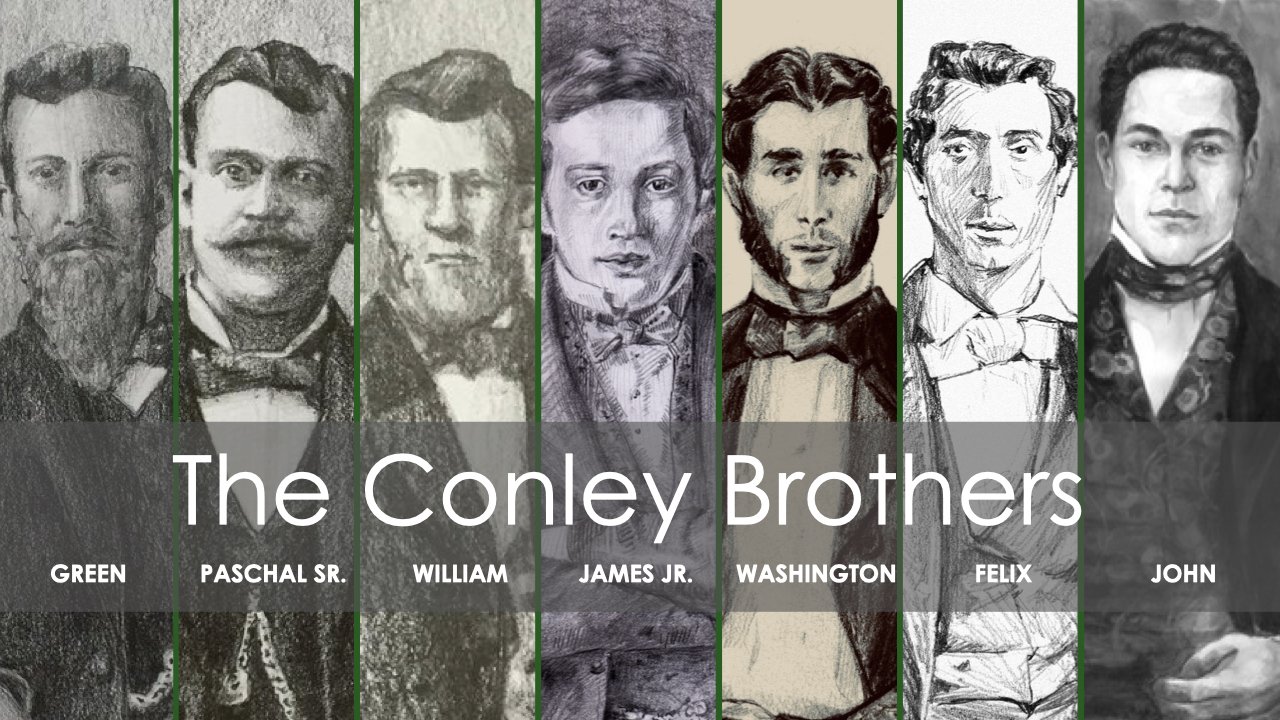Family ownership- A journey through 200 years of the CONLEY IDENTITY IN AMERICA
The history of CGH’s controlling owners are members of the Conley Family. The modern-day family is largely comprised of the mixed-race descendants of John Connally (Alabama) and his siblings: Archibald Conley (Illinois), Drury Connally (Texas), and George Connally (Georgia).
Sadie Irene Scruggs, daughter of Levi Burgess Scruggs, & great-granddaughter of Jessie Lee Conley Scruggs
The original Connally name occurs in American legend as early as the Jamestown Era. The original spelling in the Ireland is Ó Conghalaigh - a Gaelic-Irish surname. It derives from the forename Conghal, meaning "fierce as a wolf hound". Thus, the Conley name traces its name back the Irish Wolf Hound - the tallest dog breed in the world.
It is often anglicised as Connolly, Connally, Connelly, and of course, Conley. The varied American spellings of Ó Conghalaigh name used by European settlers appear to have been the result of misspelling of the original name, whimsical choice, and low literacy rates.
Unidentified woman with Irish wolf hounds from which the ancient Ó Conghalaigh name was derived.
OBSCURE BEGINNINGS
The aforementioned Connally/Connelly/Conley family carved out existence in the wilderness a century prior to the American Revolution of 1774. Then, a family member showed up in rural Lancaster County Virginia, and it appears his progeny moved in and out of obscurity before moving to Farnham County in the same state, near Richmond.
The story seemed to have turned, when a branch of the Conleys/Connallys/Connellys moved just across the state border to Caswell County, North Carolina. The ‘Western Frontier’ at that time, was everything west of the coastal cities of the 13 Colonies which formed a new nation in 1780.
“Between the years 1805 to 1809, wealthy and cultured slave owners came into the county in large numbers from North Carolina, Georgia and Virginia,” wrote historian Edward Chambers Betts. Large groups of settlers poured into the Tennessee Valley, on the western frontier of the British colonial Georgia called the “Georgia Territory”. Today the area is known as the Tennessee Valley Region. Much of the documented history of the Conley/Connally/Connally/Connelly people starts here. This vast geographic area includes parts of the states of Tennessee, Georgia, The western edge of the Carolinas, and Northern Alabama. The Tennessee Valley’s fertile soil would generate great wealth and opportunity. The State of Alabama would not be established until 1819, and the Conley/Connally Family would be among its first families.
The most prominent branch of the loose knit clan began with John Oldham Connally - a landowner and hotelier originally from North Carolina, and whose family came from Virginia. He moved to “Twickenham” in the ‘Georgia Territory’ between 1804 and 1809, and built a minor fortune in trade, hoteling, and horse stabling. He was a brash and bold man, and archetype frontiersman who forged his own identity in a new nation where rules were few.
WESTWARD migration from VIRGINIA,TO ALABAMA AND OHIO
1815-1845
The area of Connally’s initial land purchase only became known as Huntsville after the War of 1812 (the unsuccessful attempt by the British to retake the American Colonies.) In 1815, Connally began construction of the Green Bottom Inn & Equestrian Sporting Center, which opened with great fanfare. The resort quickly became known as one of the finest in the nation. No less than three early U.S. Presidents: Jackson, Monroe, and Polk, stabled their sporting horses at ‘Old Green Bottom’ resort.
John Oldham Connally
JAMES CONLEY
John Oldham Connally’s illegitimate son, James, was born on border of Virginia and North Carolina circa 1800, before the final move to Alabama. The name of the slave woman who was the mother remains unknown, a circumstance not uncommon.
Young James was initially trained as a carriage driver, and then stable master (also known as an ‘avener’ when The South was awash with francophile pretensions and hatred for the British following 1812.)
It was James’ good fortune that he was trained in a liveried profession. In the Antebellum Period (1815-1860) only the wealthiest planter class landowners were able to hire personal coach drivers. Often, the wearer of a livery uniform was an indentured servant of the highest class possible, and was given a clothing of a waistcoat, a fustian jacket, silver stockings and fur capes twice per year. Not only did they drive the carriages of plantation owners, they were also skilled mechanics who could deal with breakdowns, wheel cracks, and other issues with horses and carriages common in that era.
STABLE MASTER SKILLS AND TRADES
As stable master, James maintained the riding schedules of his father's guests and monitored the training and exercising schedules of the horses with a staff of grooms. Detailed documentation related to the pedigree, ownership, and performance of horses has long been a characteristic of the equestrian world. The demands of his role as equerry for the Green Bottom imbued young James Conley with management skills which would distinguish his descendants.
Map of President Monroe’s “Tour of the South” in 1819, courtesy of the Chattanooga Times Free Press. “The tour of the South took the president and his entourage through Virginia, North Carolina, South Carolina, Georgia, Tennessee, Alabama, Kentucky and Indiana. - Chattanooga Times Free Press.
Young James’ training and preparation would be put to the test in June 1819. President Monroe, a supporter of Alabama’s petition for statehood, paid a surprise visit to Huntsville on horse back with several carriages in tow. It was presidential ‘victory tour’ as Spain had been vanquished in the Southeast United States, and a treaty was being edited ceding southern half of current day Alabama and all of Florida to the United States. Young James Conley, only 19 and a new father, would prove his mettle and manage the care of the President Monroe’s horses during his historic stay at the famed Green Bottom Resort. The experience and exposure to the President would shape James’ standard of excellence, impacting the family for generations.
Accounts of President James Monroe's Southern tour reveal his preference for entering Huntsville, Alabama on horseback rather than a carriage. An avid equestrian, he often brought a retinue of racing and jumping horses.
James Conley was responsible for the boarding and maintenance of Monroe’s horses during his stay at “Old Green Bottom Racetrack” and Equestrian Center on the President’s historic ‘Tour of the South’ on June 1-2 in 1819.
Photo of painting from University of Mary Washington.
AFTER GREEN BOTTOM - A NEW CHAPTER
James managed to bequeath much of his assets, resources, and social capital to his son-in-law Green Conley, and seven sons and Washington, Felix, Paschal, William, James Jr., John, Hamilton.
After James Conley, the family would produce six generations of military quartermasters, construction managers, logistics coordinators, trucking professionals, archivists, librarians, engineering project managers, accountants, and financial regulators. The family became known as reliable stewards of processes, procedures, and protocols for many kinds of organizations.
1845 THE CONLEY BROTHERS EMERGE
James Conley’s profession station as equerry and stable master was the beginning of several family traditions. From his experience, his sons would be trained as indentured servants at ‘Old Green Bottom’ in livery stable management, carriage manufacture, and hotel construction. They would be led by James’ new son-in-law, Green Conley, a new arrival to Huntsville from Augusta, Georgia. Green’s marriage to Harriet - the dominant elder sister of the Brothers - would shape the family in innumerable ways. Green’s tall stature, green eyes, red hair, and his entrepreneurial spirit would result in his leading his wife’s brothers upon the death of their grandfather in 1845 and the demise of Green Bottom. All of the brothers would adopt the spelling ‘Conley’ from Green Conley.
PRECISION, RELIABILITY, INTEGRITY
After 1845, Green dispatched each of his seven brothers-in-law to build businesses around a different aspect of the former Green Bottom Equestrian Resort. In the Antebellum Period between 1815 and 1860 stonemasons, bricklayers, woodworkers, and general carpenters were in high demand. The few that owned their own operations, like the Conley Brothers, made small fortunes.
The original Conley Brothers all worked together as a construction company whenever a new equestrian facility needed to be built north and west of Huntsville. The eight of them (Green Conley and his seven Conley brothers-in-law) formed an effective network.
The skilled craftsmen trades of the Conley Brothers resulted in successful businesses in stone masonry (Green); Livery management (Paschal); carriage manufacture (John); ironworks & blacksmithing (William); horse tack manufacture (James); painting (Felix); woodworking (Hamilton). Hamilton Conley, the youngest brother, is shown at right, in his woodworking shop.
The values of precision, reliability, and integrity continue today, informing all that we do.
Hamilton Conley in his woodworking shop.









